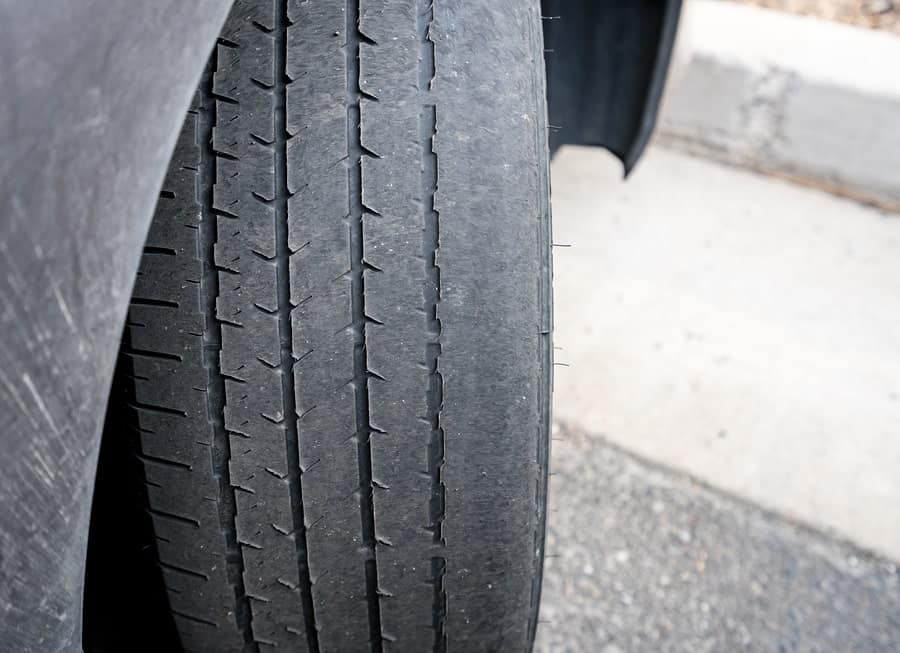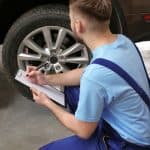
What causes wheels to go out of alignment? It doesn’t always have to be a knock or prang. Wheels can simply stray as you drive over rough surfaces and speed bumps. However if you hit a pothole or bump a kerb whilst at speed it can severely throw out your alignment.
Problems with wheel alignment can create the following consequences. In the best case you’re looking at increased fuel costs. In the middle of the road cases, your tyres will simply wear out a whole lot faster. And in the worst case you will notice a deterioration in handling. Whilst this may seem like a minor issue at first, this could lead to real problems if you need to make emergency manoeuvres at speed.
Proper wheel alignment is an essential factor in ensuring that your vehicle’s ride is safe and smooth. Many people however forget to complete regular checks. If the roads in your area are not in the greatest condition, it can throw off alignment sooner than you think. It’s not uncommon for car owners to simply suffer the problems associated with poor alignment – leading to an expensive repair bill down the line.
So how can you tell there’re issues with your wheel alignment?
1. Steering
When you’re driving down the road the logo and spokes of the steering wheel are not straight is a sign of poor alignment. Yes, the camber of the road will have some impact, but for most of the time out on the road your steering wheel should be sitting in the centre. You may even find that you’re holding the wheel in a position that would normally see the car going off the road – any variation from the norm is a sure sign you need wheel alignment.
2. Drifting or Pulling
When you’re travelling down a straight, level road can you feel your vehicle veering in one direction? If you have to keep a slight pressure on the steering wheel to keep it going straight, then you know you have an alignment problem. If the movement to one side is especially pronounced then you know that the issue has become serious.
Passive pulling is when the vehicle gently drifts in one direction or another. You can always take your hands off the wheel on an empty quiet road to test out whether or not your car is truly pulling. If it appears to veer slowly in one direction, check out the tires to make sure they are properly inflated, before going for a slight realignment.
3. Vibrating Steering Wheel
If your vehicle’s steering wheel is vibrating the chances are that this is due to an improper alignment causing the wheels to pull against one another. In the worst case scenarios this can make the entire car shake, which can be felt in the passenger and rear seats of the car too – so if the people who’re travelling with you are moaning it’s time to get it checked out.
4. Loose Steering Wheel
Does your steering feel a little loose or if you are turning the wheel with very little tire movement the chances are you have some kind of alignment issue, especially if you are getting a poor response from harder movement? One of the possible culprits however is the power steering, which you may want to get checked out along with ensuring the wheels are properly aligned.
5. Steering Wheel Doesn’t Centralise
After you complete a turn, the steering wheel should naturally start to return to the straight position on its own as you keep driving around. You can test this in a similar manner to the car pulling – taking your hands off the wheel momentarily to see if the vehicle corrects its position on the road. If it doesn’t then you may have loose steering or worn out suspension components.
6. Squealing Tyres
The camber and toe settings are responsible for each wheel’s alignment in respect of the ground and the other wheels on the car. If one of these strays out of the normal position this can cause adverse friction leading to all kinds of strange noises, squealing and all kinds of noises coming off the wheels.
Do of course remember that wheel alignment is an entirely different ball game from tire balancing, which deals with the weight distribution across the tire.
The suspension position may go off when you hit a large road curb or a pothole. Also, it may be out of alignment if a mechanic that performs the tire rotation or installs new wheels/suspension breaks the three settings.
It’s important to remember that wheel alignment differs from tire balancing, as many people confuse the two procedures. One deals with suspension positioning, while the other – with weight distribution within a tire.
7. Uneven Tyre Wear

Tyre wear patterns can often act as the canary in the coal mine when it comes to problems with the alignment of your wheels. Check the depth of the tread on either side of your vehicle’s tyres, if one side appears to be more worn than the other then the chances are there’s an alignment problem.
Wear on the outside or inside edges usually indicates camber adjustment issues, whilst feathering or scallop shaped patterns points to toe adjustment problems.
How You Can Resolve Alignment Issues
Even if everything feels right and there are no symptoms of veering or issues with the control of your vehicle, there are some steps you can take to ensure it stays square and central on the road:
- Remove any weight from your car. If you have too much stowed in the boot of your car this can seriously throw off alignment. Get rid of all that excess weight and book in the vehicle for another test.
- Keep one eye on the air pressure. Having the correct air pressure in your tires on all wheels means that the car is kept level and straight on the road. Discrepancies between pressure can mean that the wheels stray out of alignment.
- Embrace careful driving. Hitting bumps and kerb at speed can easily throw out alignment and even damage your brakes. Simply conserving speed and being prudent behind the wheel will also place less strain on steering and suspension.
Benefits of Wheel Alignment
Problems with alignment can lead to bigger issues with your vehicle. Some of the reasons why you should always have a professional look at your wheel alignment as soon as you suspect there is a problem:
- It prolongs tyre life. Even if you regularly rotate your wheels every 7K miles or so they can still get shredded in a relatively short time.
- It satisfies warranty requirements. Many tyres will have a clause in the warranty agreement that requires you to conduct regular alignment checks to ensure that the tyre is not wearing prematurely or incorrectly.
- It improves handling. Cars with good wheel alignment are easier to drive. Especially when dealing with road obstacles such as potholes, which can make the alignment even worse.
- It reduces wear on the steering column. Bad alignment causes wear and stress on many different car parts – not only the tyres. It can cause the steering and suspension to wear and the shaking can give you problems too.
- It gives you a better miles per gallon. As the vehicle need to put in more energy to get from A to B when the wheels are aligned properly.
And Finally…
Poorly aligned wheels can create a whole host of problems when you’re out on the road before you even begin to factor in the issues with premature wear – so get down the garage at the first sign of trouble. Even if it costs you a bit of cash to get the vehicle looked at remember that you’ve still saved yourself cash on the costs of fixing longer term damage.
As suspension and steering checks are usually included in an alignment test – and any problems will be resolved – you’ll actually be surprised by how well your vehicle drives after the check-up.









.png)